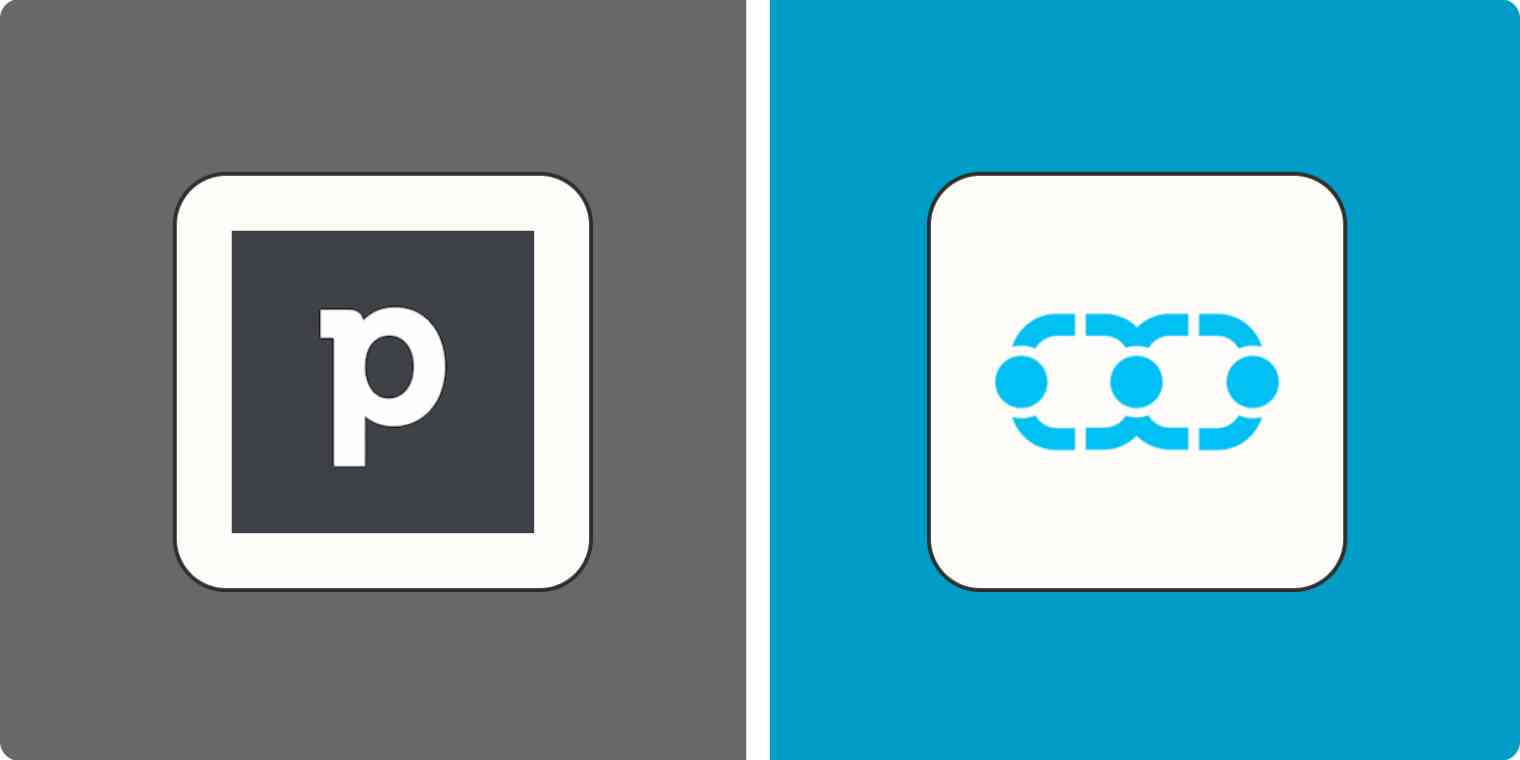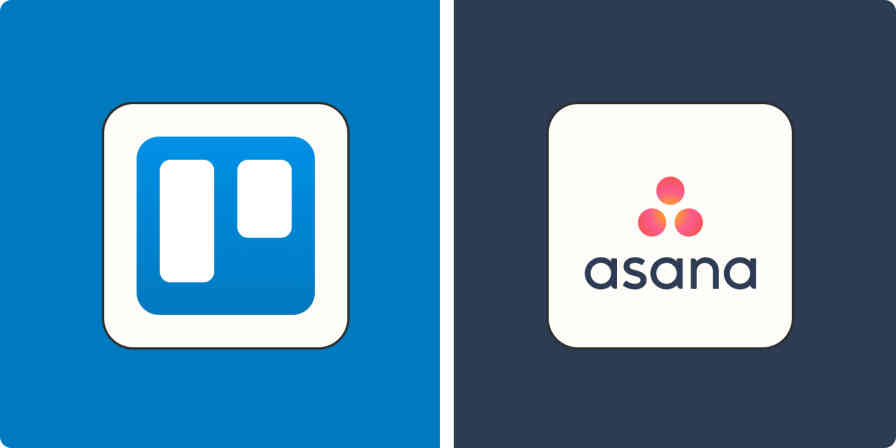Your customer relationship management (CRM) software might just be your most important resource when growing your business. It helps you turn strangers into leads, leads into customers, and customers into the kind of customers that leave glowing reviews.
I spent time testing two fan-favorite CRMs, Pipedrive and Salesmate, to see how they stack up, from usability to pipeline management to workflows and automation. Read on for my takeaways from testing Pipedrive vs. Salesmate.
Pipedrive vs. Salesmate at a glance
Pipedrive and Salesmate are both really solid sales-focused CRMs. They both offer customizable visual sales pipelines, customer and lead management features, team collaboration tools, task automation, and much more.
Here are the most notable differences between the two platforms:
Pipedrive is better for businesses looking for a user-friendly CRM with the budget for premium add-on features.
Salesmate is better for small businesses on a budget that want an effective and feature-rich CRM.
Pipedrive | Salesmate | |
|---|---|---|
Pipeline management | ⭐⭐⭐⭐⭐ Flexible, drag-and-drop pipeline view with consolidated lead history and other important info; offers a Forecast view | ⭐⭐⭐⭐⭐ Flexible, drag-and-drop pipeline view with consolidated lead history and other important info; flags idle deals; can set a "win probability %" |
User-friendliness | ⭐⭐⭐⭐⭐ Digestible and user-friendly interface; polished demo videos | ⭐⭐⭐ Less intuitive yet still relatively user-friendly interface; some unpolished UX |
Reporting | ⭐⭐⭐⭐ Solid sales and customer reporting; limited reports unless on Enterprise plan; very aesthetic dashboard | ⭐⭐⭐⭐ Solid sales and customer reporting; unlimited reports; less aesthetic dashboard that's limited to 10 widgets |
Workflow automations | ⭐⭐⭐⭐ Workflow builder available with Advanced plan and up | ⭐⭐⭐⭐ Basic workflows available with Starter plan and up; Automation Journeys (visual workflow builder) is a paid add-on |
Integrations | ⭐⭐⭐⭐⭐ 400+ native integrations; integrates with Zapier | ⭐⭐⭐⭐ 40+ native integrations; integrates with Zapier |
Price | ⭐⭐⭐ 14-day free trial; slightly more expensive than Salesmate; many costly add-ons available Essential: $14.90 Advanced: $27.90 Professional: $49.90 Power: $64.90 Enterprise: $99 (All prices per user per month, billed annually) | ⭐⭐⭐⭐⭐ 15-day free trial; slightly less expensive than Pipedrive, with more features Starter: $12 Growth: $24 Boost: $40 Enterprise: Custom (All prices per user per month, billed annually) |
Artificial intelligence (AI) | ⭐⭐⭐⭐ Offers an AI sales assistant | ⭐ Doesn't offer any notable AI features |
Pipedrive has a more user-friendly interface
Let me preface this by acknowledging that user-friendliness is a relatively subjective metric (though there are some objective reasons most of us can agree on).
In terms of overall user experience, both platforms offer in-app feature walkthroughs and tip callouts as well as links to guided demo videos.
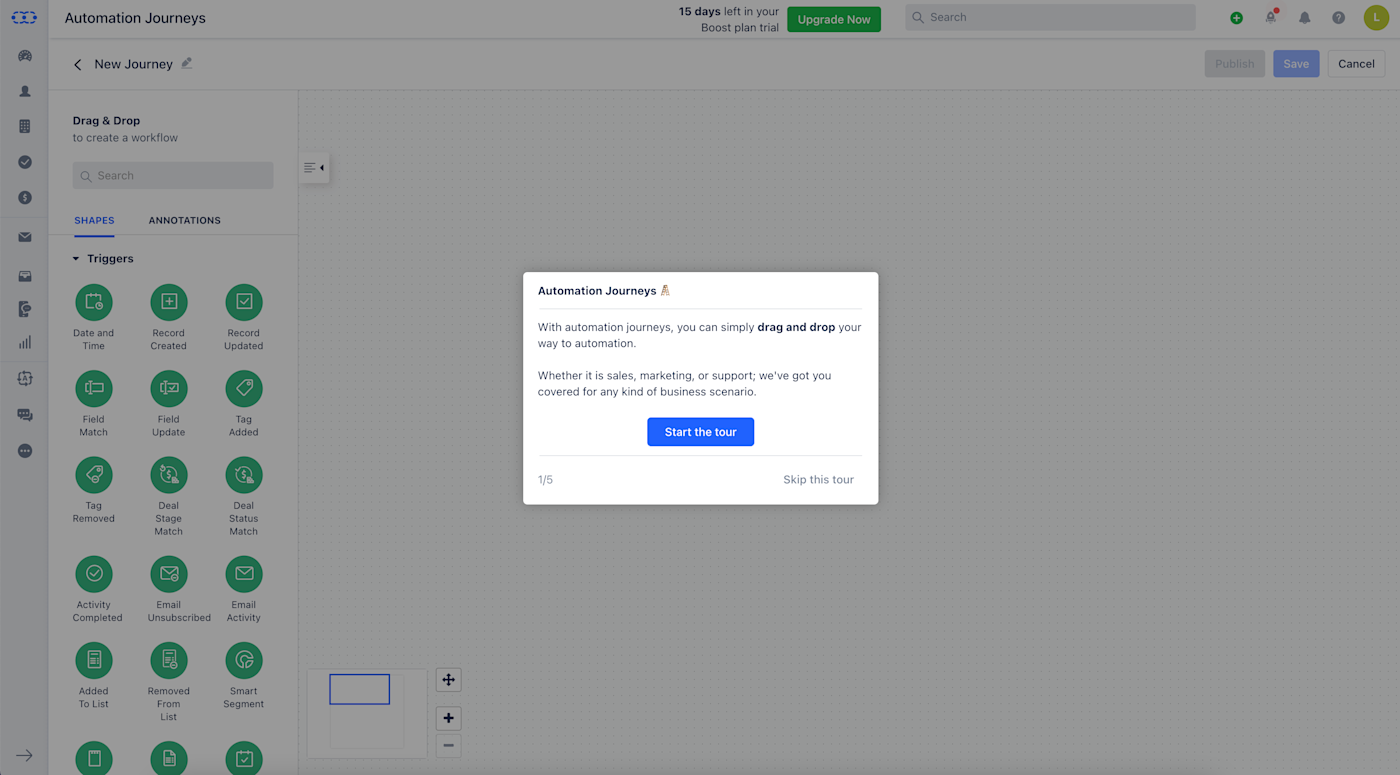
That said, I found Pipedrive's videos to be far more put together and easier to follow. While Salesmate's demos were helpful, they felt more like amateur walkthroughs compared to Pipedrive's polished videos.
I also ran into some frustrating (albeit minor) UX roadblocks in Salesmate. When naming a shared inbox, I received an error message saying, "Please provide valid name," without any indication of what a "valid name" is. Turns out, apostrophes are a no-go, but it would've saved me some confusion if the app had pointed out that this was the issue.
Pipedrive provides users trialing the platform with sample data—a big win for those of us who hesitate to make a purchase before playing around with some data in the platform. It also offers several helpful pre-built views that use color coordination to make your sales pipeline easy to digest at a glance.

The Forecast view above shows all in-progress deals and highlights won deals, as well as how they both contribute to monthly earnings. There's also a List view showing all deals—won, lost, and in progress—and a Pipeline view (essentially a Kanban board), where you can drag and drop prospects through the stages of your custom-built pipeline.
Salesmate also offers a List and Board view—they just lack the visual appeal of Pipedrive's views. Plus, there's no Forecast view that takes into account won deals alongside in-progress ones—you'd have to create a report to see this data.
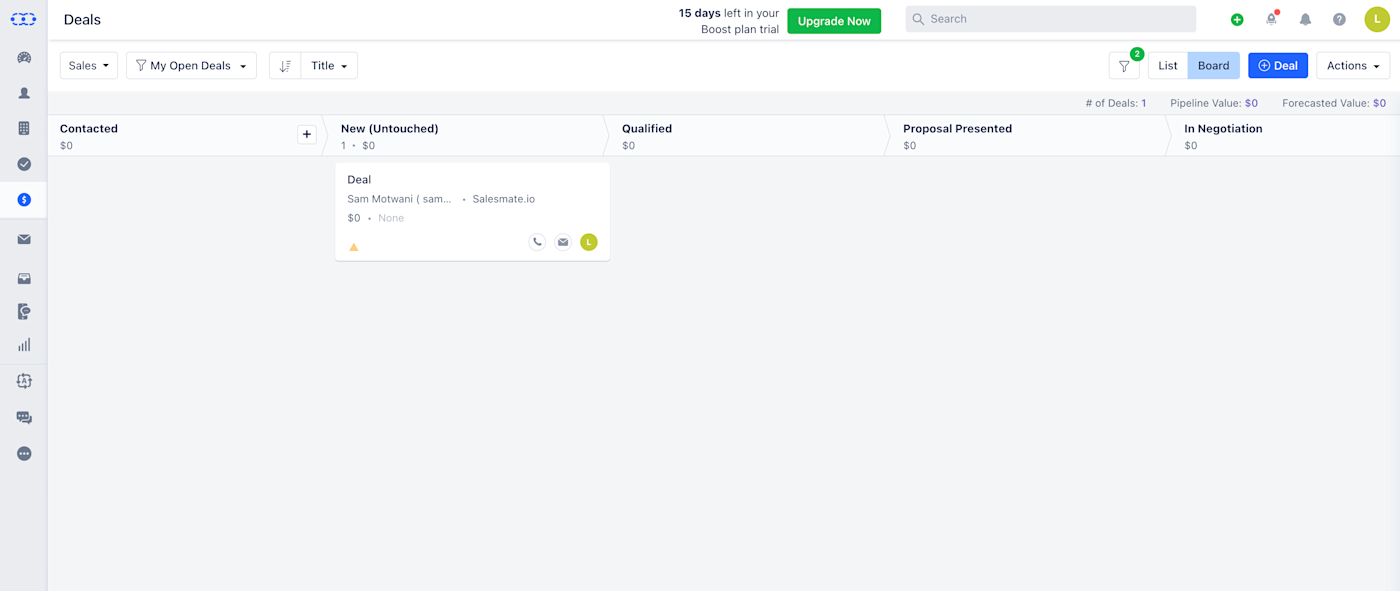
That said, both platforms do offer visual drag-and-drop sales pipelines that are easy to navigate and customize, making customer journey management a breeze.
Another feature where Pipedrive's user-friendliness and aesthetic appeal shines is its reporting. When opening the app's Insights tab, I was impressed with the lead, deal, revenue, and activity data made super digestible by a color-coded and flexible drag-and-drop dashboard.

Plus, after generating a new report, I could simply drag and drop it into the dashboard and customize its data viz format—pie chart, column, table, scorecard, and more—as well as its appearance to my liking.
I found Salesmate's reporting to be slightly less visually digestible and user-friendly. For one, reports and dashboards live in separate sections, which didn't make much sense to me. Rather than dragging and dropping specific reports into the dashboard, I was taken to another page where I had to sort through a list (granted, an impressively extensive one) of metrics to add to my dashboard. Plus, each Salesmate dashboard has a limit of 10 widgets—a limitation I didn't encounter on Pipedrive.
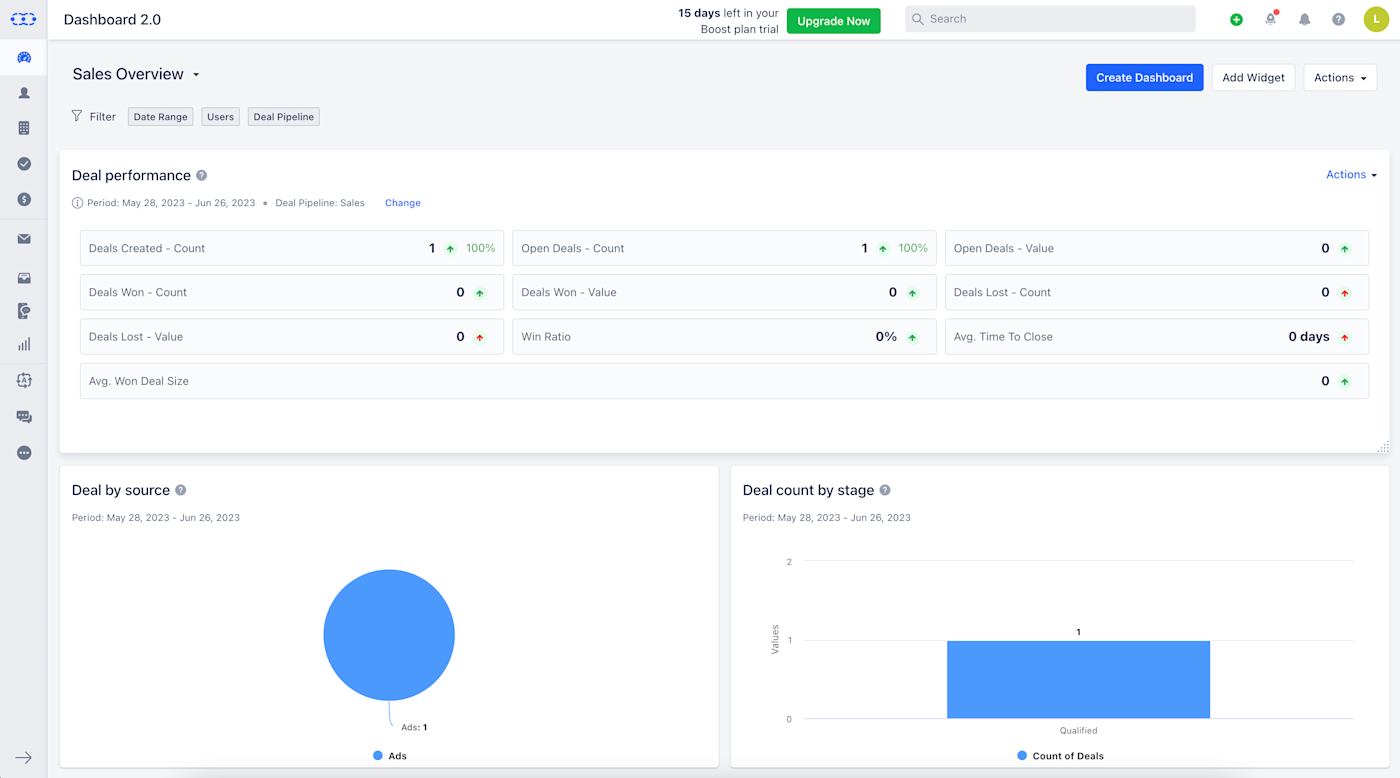
Salesmate gives you more bang for the buck
Despite its usability shortcomings, in a value-for-money game, Salesmate has Pipedrive beat. With Salesmate's Starter plan (which costs about $3 less than Pipedrive's Essential plan), you get many features that Pipedrive gates as costly add-ons.
Reports and deals
First, let's talk about "unlimited." Pipedrive's reports may be pretty, but they're very limited. With its Essential plan, you can only create 15. The only option that offers unlimited reports is its $99 per-user-per-month Enterprise plan. Salesmate, on the other hand, doesn't pose any limits on the number of reports you can create, even on the Starter plan.
Likewise, you can have unlimited open deals on every Salesmate plan, whereas Pipedrive caps you out at 3,000 deals on the Essential plan and only offers unlimited with Enterprise.
Workflow automations
Pipedrive also makes workflow automations only accessible to those with its Advanced plan and up, while Salesmate makes this feature available to all plans.
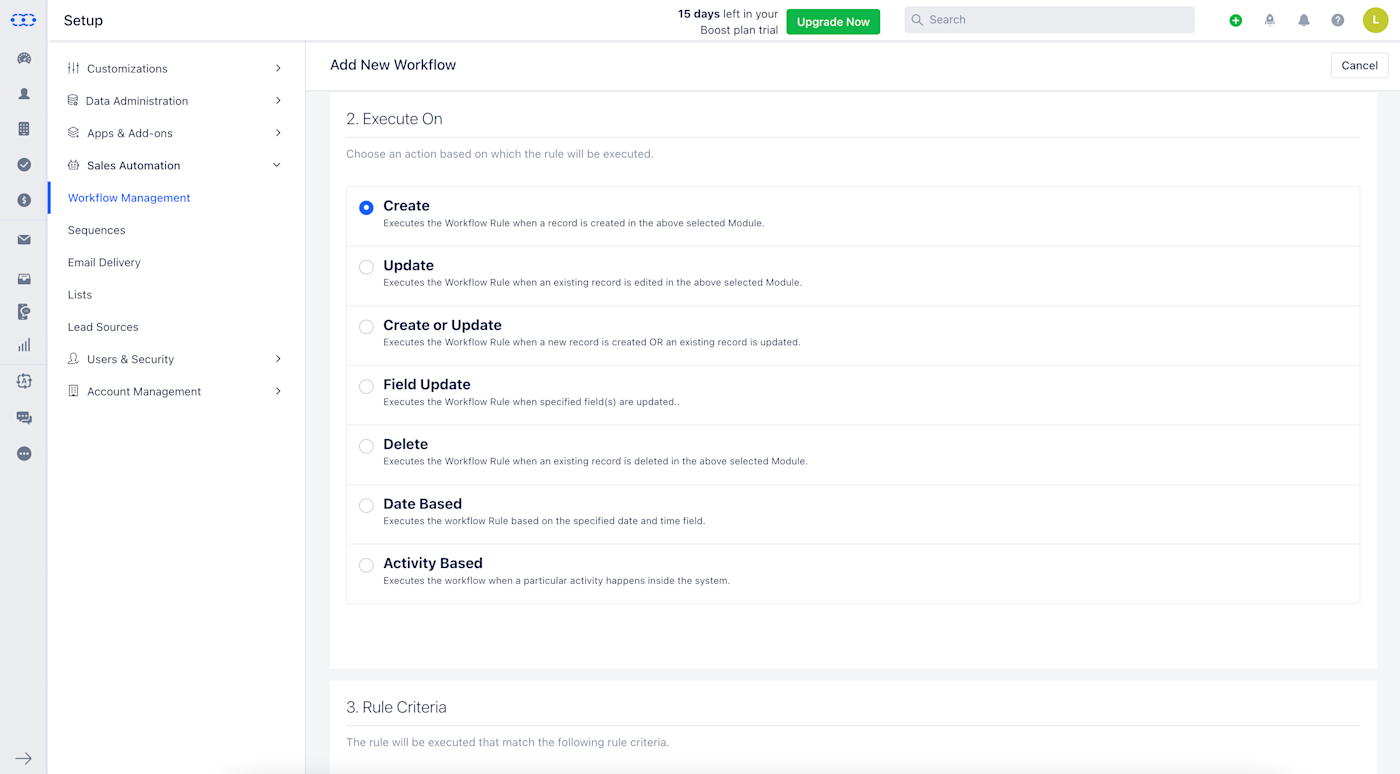
Granted, it's not the clean-cut automation feature that Pipedrive makes available with its Advanced plan, but it offers solid options for automating campaigns and pipeline management. In short, it gets the job done.

To enjoy a similar (and arguably much more enjoyable) workflow builder, known as Automation Journeys, in Salesmate, you can get the add-on, starting at $30 and increasing in price depending on how many contacts you have.
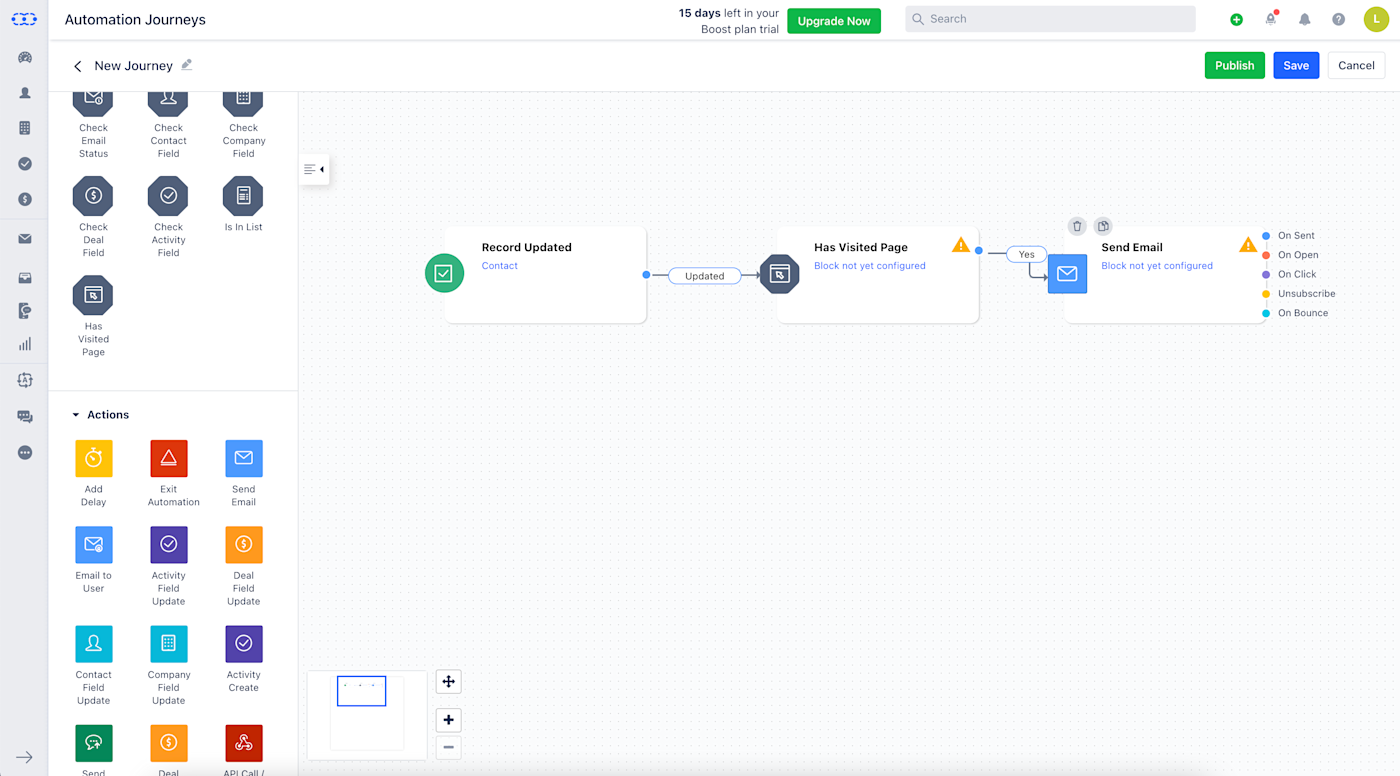
The interface is vibrant, flexible, and even comes with some fun annotations you can add to your workflow builder to add some color (pun intended) to your customer journey.
Team inbox and text messaging
Salesmate also offers some valuable features that Pipedrive lacks altogether. Starting at $24 per user per month, you can activate a Team Inbox with shared visibility into messages and auto-assignments to the right team member, enabling internal collaboration on deals and other projects.
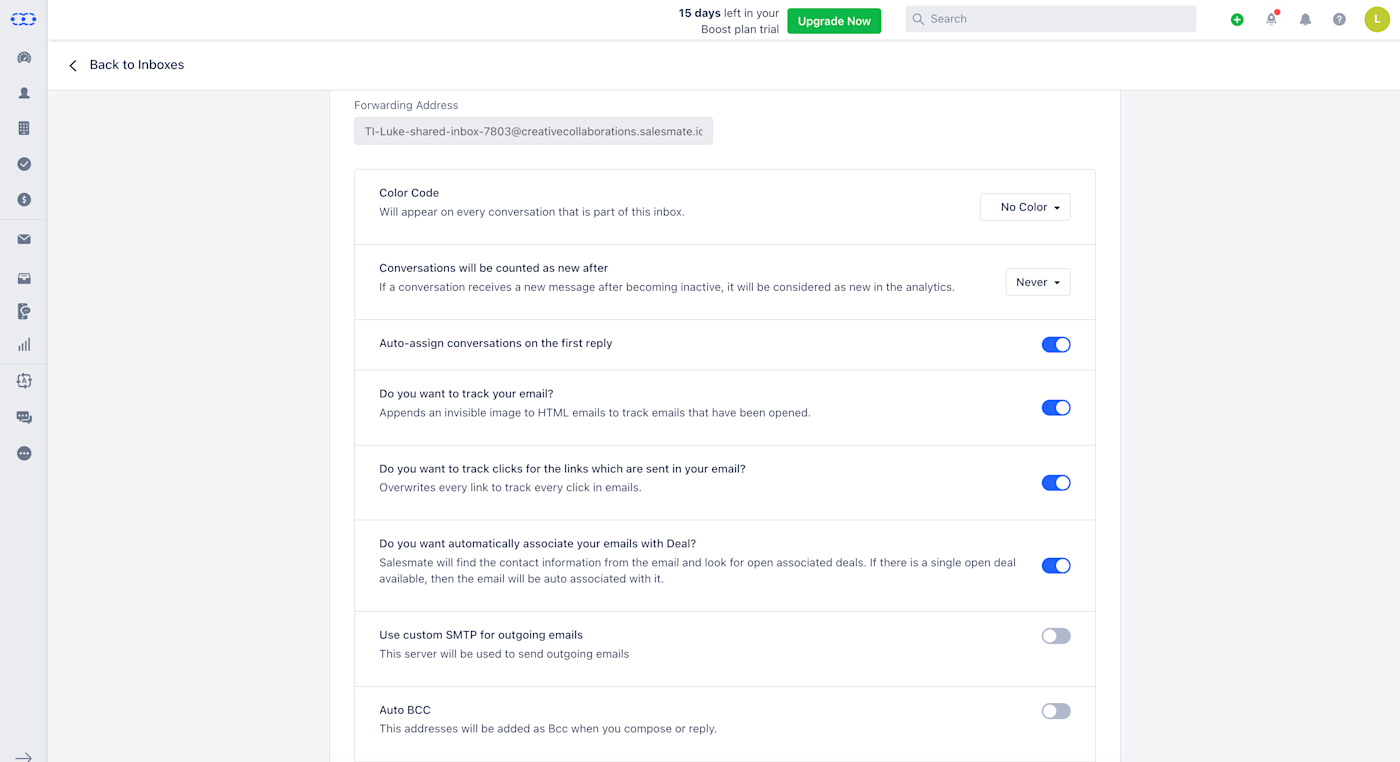
It also offers built-in text messaging for all its plans, providing an easy way for customers and leads to communicate with representatives.
Overall, a good chunk of the features that Salesmate makes available at a budget price, Pipedrive makes you pay a pretty penny for.
Pipedrive has a handy AI assistant
Are we really approaching the mid-2020s if we aren't talking about how these platforms stack up when it comes to artificial intelligence? Here's the simple reality: Pipedrive offers an AI assistant, and Salesmate doesn't.
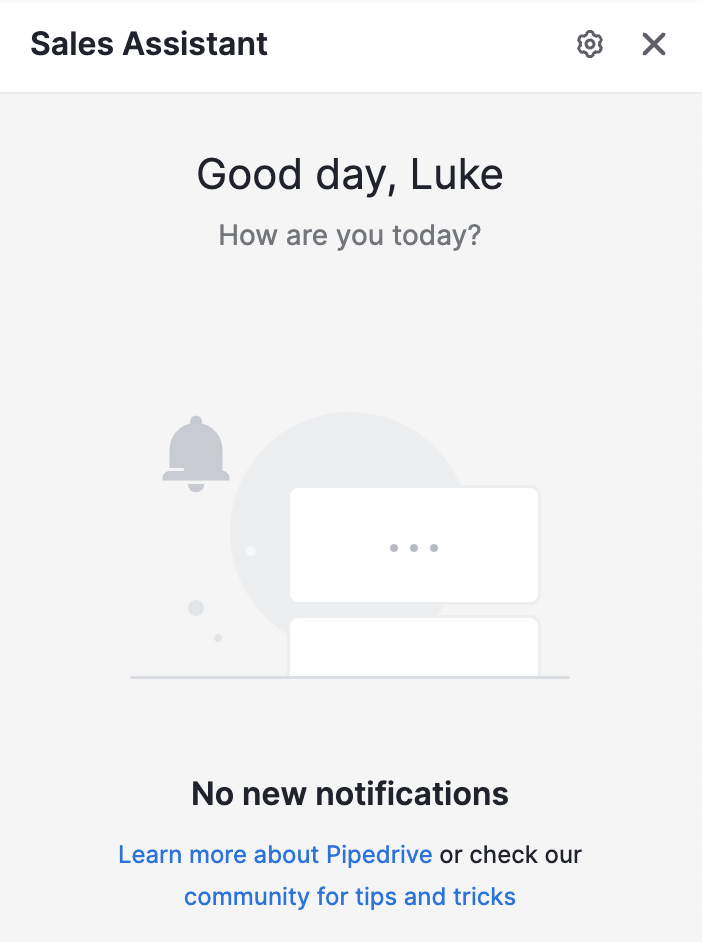
I didn't have enough historical data in Pipedrive's platform to comprehensively test it. But here's the gist: it takes past performance data and turns it into insights, notifying you when it's time to reach out to leads and take other actions to improve your success and profitability. It also sends through period-over-period performance metrics to show your progress.
Might Salesmate add an AI feature in the near future? More than likely—after all, everyone's hopping on the AI bandwagon. But for now, it has some catching up to do.
Both apps have deep integrations, including with Zapier
Pipedrive and Salesmate both have a lot of native integrations, and you can connect them with thousands of apps through Zapier. Here are some examples to get you started.
Add new Gravity Forms submissions to Pipedrive as people
Create Pipedrive deals from new Facebook Lead Ads leads
Create Salesmate contacts from new Facebook Lead Ads leads
Pipedrive vs. Salesmate: Which is best for you?
There are two big questions to answer when deciding between Pipedrive and Salesmate:
How much do you care about aesthetics and user-friendliness?
How much money do you have to spend on a sales-focused CRM?
If your answer to both these questions is a lot, go for Pipedrive. If it's not much, you'll be more than happy with Salesmate. Also be sure to explore both platforms' many paid add-ons to see if they offer something you need.
Overall, both apps are very solid options that combine pipeline and customer management while offering some reliable workflow and reporting features. The decision mostly comes down to personal preference and affordability.
Related reading:
